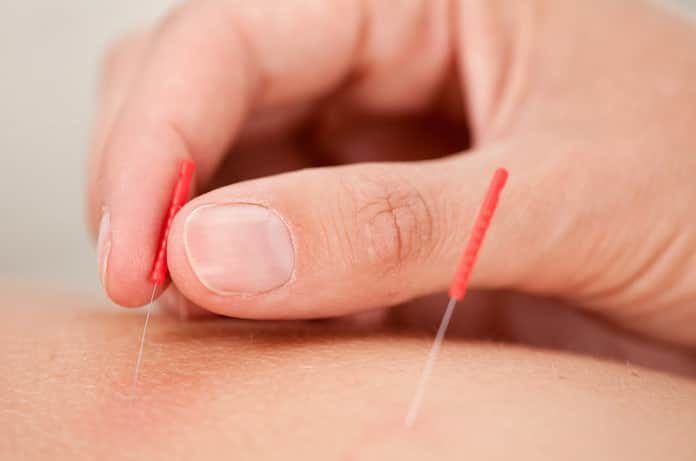Research suggests that dry needling is a safe and effective alternative treatment to steroid injections for the treatment of greater trochanter pain syndrome.
Greater trochanter pain syndrome (GTPS) is described as injuries related to the outer hip and is also known as greater trochanteric or subgluteal bursitis. The most common symptoms associated with GTPS is pain in outer thigh and hip area which is chronic and intermittent. The cause is usually due to inflammation or injury to some of the tissues that lie over the greater trochanter, including muscles, tendons, strong fibrous tissue (fascia), and bursae. A bursa is a small sac filled with fluid which helps to allow smooth movement between two uneven surfaces. However, several studies suggest that most cases of GTPS are due to minor tears or damage to the nearby muscles or tendons and that an inflamed bursa is an uncommon cause. This kind of hip pain may affect younger people with increased physical activity but is reported to be more common in women 40-60 years of age or in patients with coexisting low back pain, osteoarthritis, and obesity. Early research indicated that a swollen hip bursa was the source of such pain, which led to the use of corticosteroid injections to the bursa to help decrease swelling and pain. However, according to recent studies, the injuries to the muscles and tendons around the hip are the actual cause of this pain, and that inflammation is often not involved.
An article by Brennan and colleagues in the Journal of Orthopedic and Sports Physical Therapy (2017) assessed the effects of dry needling as an alternative to cortisone injections to reduce pain and improve function in patients with lateral hip pain. Forty-three participants (50 hips observed), all with GTPS, were randomly assigned to a group receiving either cortisone injection or dry needling. The study showed similar results between groups for either dry needling or steroid injection at short and long term follow up. Both groups experienced a decrease in pain and an improved ability to move and complete daily activities. Due to the potential detrimental side effects of steroid injection, particularly repeated injections, the researchers suggest dry needling combined with physical therapy, as an alternative treatment of GTPS.
The researchers found dry needling to be non-inferior to cortisone injections for the treatment of GTPS; although, additional studies investigating the effectiveness of dry needling are needed. The limitations of the study were that it lacked a control group, had relatively small sample size, and a short study period.
Written By: Nupur Srivastava, PhD



